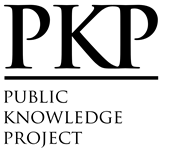Motivation for Learning in Virtual Environments
Abstract
The use of state-of-art immersive technologies enhanced undergraduate students’ motivation to learn. The main variables for the comparative analysis are the opinions of surveyed students for three academic terms and the perception of motivation as an engine for learning. The data used for this article comes from undergraduate students at a Mexican university, Tecnológico de Monterrey, during January 2019 up to June 2020. The virtual activity designed for fostering motivation for is called: Welcome to Ur, Mesopotamia. The activity consists of a recreation of the ancient city of Ur using 3D animation and virtual reality goggles. Each student was able to travel back on time and explore by foot the streets, temples, and palaces of the Mesopotamian city. The courses where the educational experiences took place, "Sustainable Cities and Communities" and "Citizenship and Democracy" reported higher satisfaction and motivation to learn that those courses that did not use the virtual tool. The use of technological tools helped students to have better understanding of the academic content. The students reported feeling motivated to learn more about political history due to the immersive learning activity.
Full Text:
PDFDOI: https://doi.org/10.5296/jsss.v10i1.20895
Refbacks
- There are currently no refbacks.
Copyright (c) 2023 Guillermo Gándara Fierro, Ana Gabriela Rodríguez Mendoza

This work is licensed under a Creative Commons Attribution 4.0 International License.
Journal of Social Science Studies ISSN 2329-9150
Copyright © Macrothink Institute
To make sure that you can receive messages from us, please add the 'macrothink.org' domain to your e-mail 'safe list'. If you do not receive e-mail in your 'inbox', check your 'bulk mail' or 'junk mail' folders. If you have any questions, please contact: jsss@macrothink.org
-----------------------------------------------------------------------------
